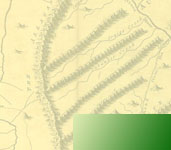Glossary of Terms
Seeds and Bones:
- Context: At Wingo’s, each excavation quadrat was given a unique number, and each deposit was assigned a letter. The number and letter combination, which is known as the context, is the unique identifier for each archaeological deposit at a site.
- Element: The name of a particular bone in the skeleton.
- Fauna: Animals
- Species: The basic category of classification for animals and plants. Members of a species resemble one another and can breed with one another, but not with members of other species.
- Weight: All bones were weighed in grams.
Elements:
- Auditory bulla: A hollow bony area in the back of the skull that encloses parts of the middle and inner ear.
- Beak: the horny projecting jaws of a bird, the bill
- Canine: tooth found next to the incisor, used to hold food in place
- Carapace: bony shell of a turtle
- Carpal: bone in the wrist
- Carpometacarpus: bone in a bird’s wing formed by fusion of the carpal and metacarpal bones
- Coracoid: bone found in birds and reptiles that articulates with the scapula and sternum
- Eggshell: the keratin fibers and calcite crystals that form the outer, protective coating of a bird’s egg
- Femur: thick long bone of the upper leg
- Furculum: wishbone of a bird
- Fibula: thin long bone of the lower leg
- Fibular tarsal: a bone of the ankle that articulates with the fibula
- Humerus: the long bone of the upper fore limb that articulates with the shoulder
- Ilium: a bone of the pelvis
- Incisor: front tooth, used to cut food
- Long bone: term used to describe a bone that is unidentified due to fragmentation but could be a femur, tibia, fibula, humerus, radius or ulna
- Mandible: the lower jawbone
- Maxilla: the upper jawbone
- Metacarpal: part of the fore limb between the carpus and phlanges
- Metatarsal: part of the hind limb between the tarsus and phalanges
- Molar: tooth in the back of the mouth used to grind food
- Pelvis: cavity at the lower part of the trunk of many vertebrates, includes the pubis, ilium and ischium
- Premolar: tooth next to the canine used to hold and crush food
- Petrous process: part of the sphenoid bone of the skull
- Phalanx (phalanges, pl.): bone of the fingers or toes
- Quadrate: bone of the skull
- Radius: bone in the fore leg, paired with ulna
- Rib: curved bone that connects to vertebra, ribs are paired
- Sacrum: bone formed from fused vertebra in the lower spine, forms the back wall of the pelvis
- Scale: hard plate covering the body of fish
- Scapula: flat, roughly triangular bone that forms the shoulder
- Shell: hard outer covering of an animal or an egg
- Skull: the bony framework of the head that holds the brain and supports the face
- Sternum: narrow bone connecting with clavicle and ribs
- Tarsometatarsus: large bone in the lower leg of a bird formed by the fusion of the tarsal and metatarsal bones
- Tibia: long bone in the lower leg
- Tibial tarsus: bone of the ankle that articulates with the tibia
- Tibiotarsus: the main bone in the leg of a bird
- Tooth: hard body or process attached by a root to the jaw, used for chewing food and for defense or attack
- Ulna: bone in the fore leg, paired with radius
- Vertebra: a bone or segment that is part of the spinal column
- Vertebra, caudal: a bone or segment that forms part of the tailbone
- Vertebra, cervical: the vertebra immediately below the skull
Wills and Historical Documents



